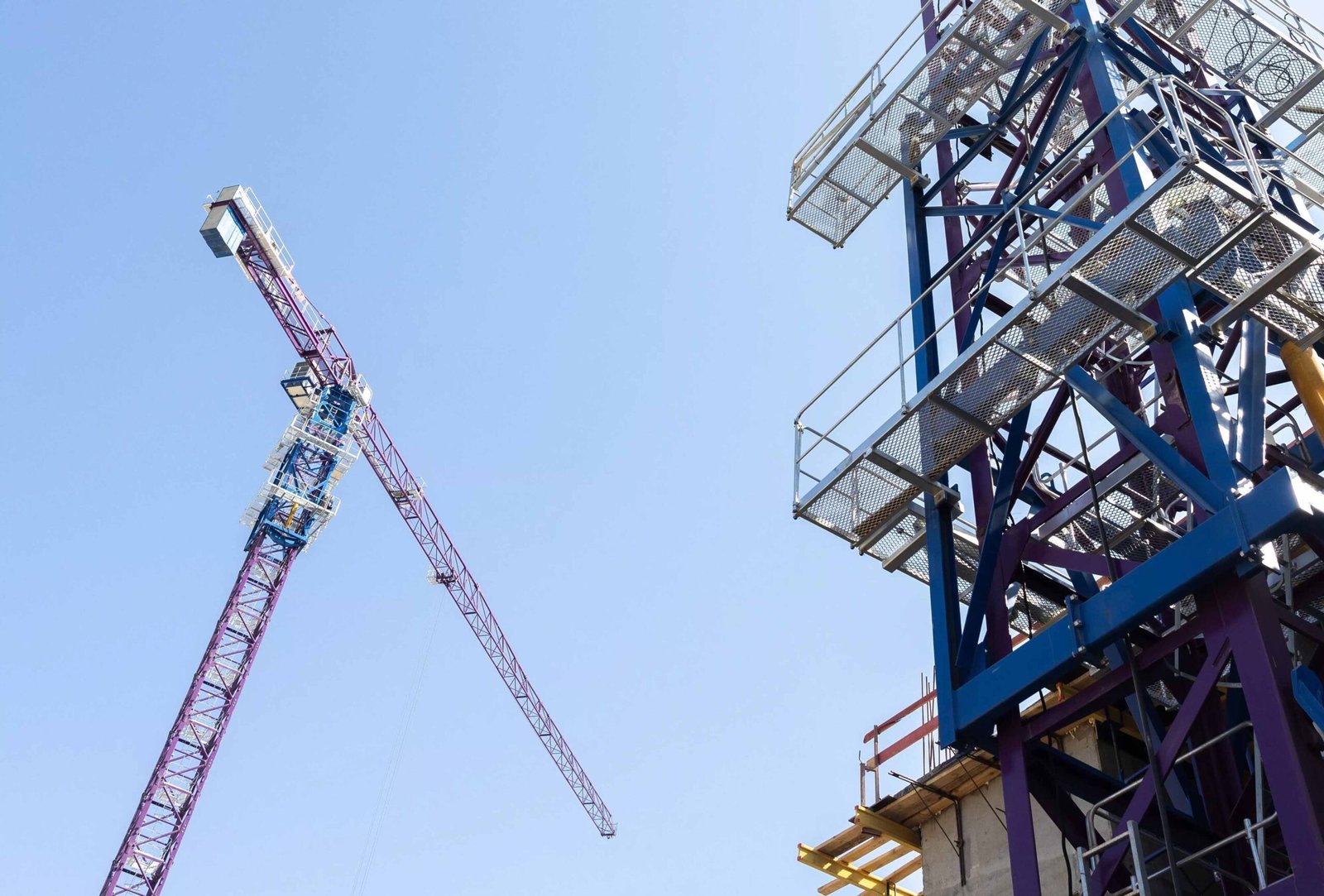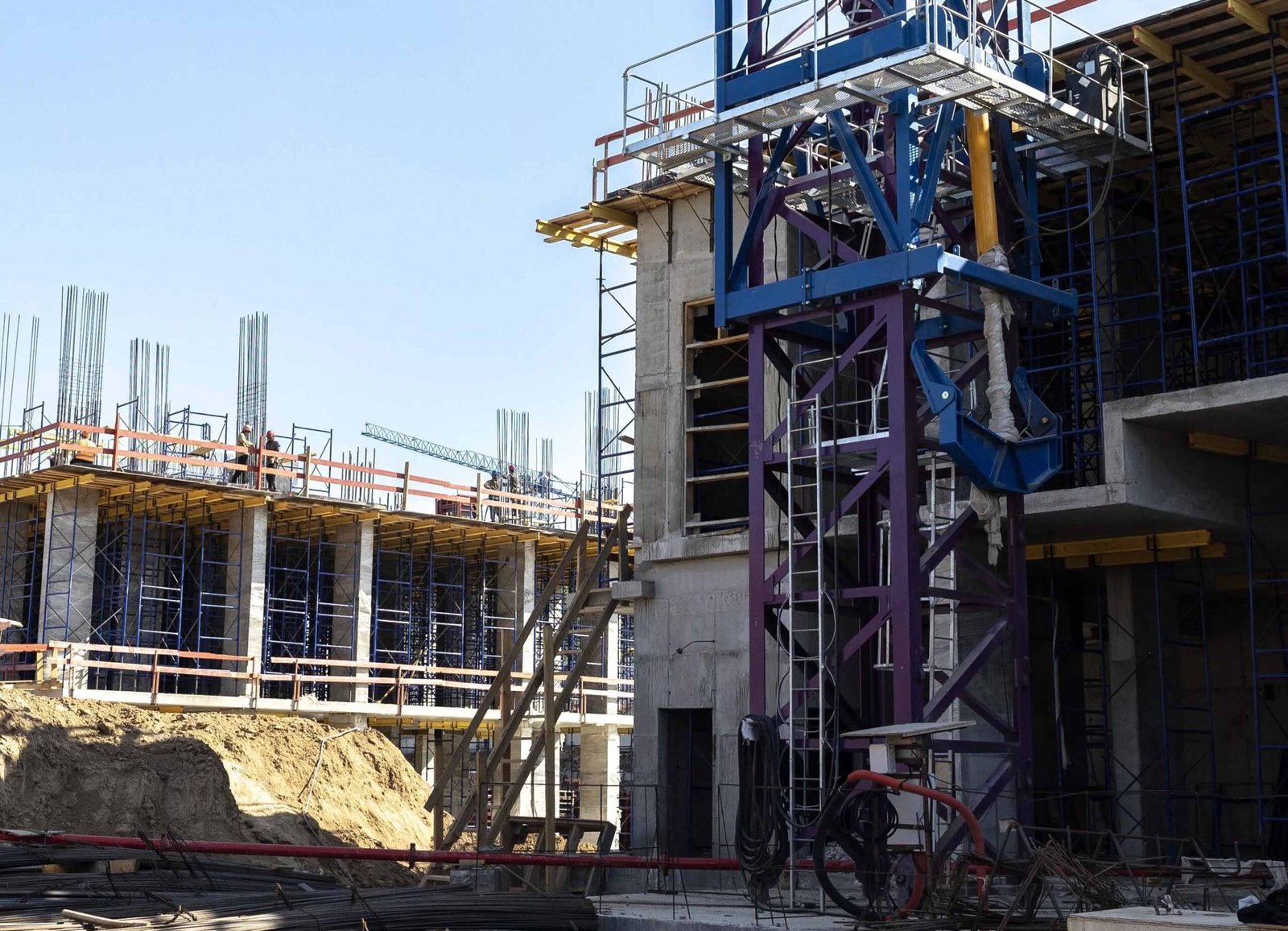
Tower cranes play a crucial role in construction projects, especially for skyscrapers and large buildings. But how do these massive machines get up onto the building to start their work? How do crane operators reach the top, and how do cranes lift? In this article, we’ll explore how cranes get on top of buildings, how crane operators access the crane, and much more.
Tower cranes1 are built and operated through careful planning, with crane operators accessing their positions in a variety of ways.
Getting a crane up onto a building, or even a construction site, involves precise logistics. From cranes assembling themselves to operators climbing up, these machines work in ways that may surprise you. Let’s dive into how cranes manage to reach such heights and stay safe while working at towering altitudes.
How Do Crane Operators Get Up?

Cranes are towering machines, so how do crane operators get up to where they control them? Do they climb up? Or is there a more efficient way?
Crane operators2 typically access their crane's cabin using a climbing ladder, lift, or mechanical means to reach the working height.
The operator’s access to the crane depends on the design of the tower crane. Most cranes have an internal ladder or lift inside the mast that allows operators to climb or ascend to the top. Larger cranes might feature a special elevator or mechanical lift system, which helps crane operators quickly reach the cabin without the need for physical climbing. In some cases, operators also use external climbing devices, like a self-climbing system, to safely get to the top of the crane, especially during construction of the building itself.
Crane Access Systems:
- Climbing Ladders3: Used in many smaller cranes for operator access.
- Elevators/Lifts: Common in larger cranes to speed up the process.
- Self-Climbing Systems: Used for cranes that need to increase height as the building rises.
| Access Method | Description | Best For |
|---|---|---|
| Climbing Ladders | Traditional ladders inside the crane mast | Smaller cranes, early phases |
| Elevators/Lifts | Internal or external lifts designed for operator ascent | Larger cranes, long-term use |
| Self-Climbing Systems | Mechanisms that raise the crane as the building grows | Skyscraper projects, high-rise |
How Do Cranes Get Out of Buildings?

Once the crane has been assembled inside a building site, how does it exit once its work is done?
Cranes are disassembled or retracted in stages to exit the building site after completing their tasks.
Removing a crane from a building site is a complex process. Typically, the crane is disassembled in stages, and the pieces are lowered down or removed in sections. In some cases, a tower crane may be dismantled piece by piece from the top down, with the crane lifting its own components or being used to lift out other heavy machinery. For large buildings, where the crane is built on-site, cranes can also be "climbed down" using self-climbing mechanisms, but this is less common. Alternatively, a smaller mobile crane might be used to lower parts of the tower crane to the ground, allowing it to be disassembled and removed.
Crane Disassembly Process:
- Step 1: The crane is disassembled from the top down.
- Step 2: Components are lowered using the crane itself or mobile equipment.
- Step 3: Remaining parts are transported off-site for reassembly or sale.
| Step | Description | Tools Required |
|---|---|---|
| Disassembly | Crane components are removed systematically | Tower crane, mobile crane |
| Lowering Components | Components like the jib and counterweights are lowered | Lifting equipment, mobile cranes |
| Transport | Parts are removed from the site | Trucks, flatbeds |
How Do They Get Cranes to Building Sites?

Transporting a crane to a construction site is another significant logistical challenge. How do these huge machines get from the factory to the site?
Cranes4 are usually transported in parts, which are then reassembled at the building site.
Since cranes are too large to transport as a single unit, they are typically disassembled and shipped in parts. These parts, including the base, jib, tower, and counterweights, are transported on large trucks. Once the crane components arrive at the site, they are reassembled using smaller mobile cranes or other heavy lifting equipment. The crane is then assembled to its full height, ready to begin lifting materials for construction. The process of transporting and assembling a crane can take several days, depending on the crane size and complexity of the site.
Crane Transportation Steps:
- Part-by-Part Delivery: The crane is disassembled into manageable parts.
- Reassembly: The crane is put back together using smaller cranes.
- Height Adjustment: The crane is set up for operation by adjusting its height.
| Step | Description | Timeframe |
|---|---|---|
| Part-by-Part Delivery | Cranes are transported in sections | 1-2 days for large cranes |
| Reassembly | Reassembling parts on-site with smaller cranes | 2-3 days depending on crane size |
| Height Adjustment | Adjusting crane height for the building's needs | 1-2 days depending on complexity |
How Do Tower Cranes Lift?

Tower cranes are known for their incredible lifting capacities, but how exactly do they manage to lift heavy materials to such high altitudes?
Tower cranes use a combination of mechanical pulleys, cables, and motors to lift heavy loads.
Tower cranes lift materials using a system of pulleys, cables, and motors. The crane's hoist mechanism allows it to raise loads vertically and extend them horizontally, thanks to the rotating jib arm. The power for lifting is generated by the crane's electric motor, which operates the winch. The winch pulls in or lets out a cable that is attached to the load, lifting it vertically or swinging it outwards to where it’s needed. The lifting power is determined by the crane's design, with some cranes capable of lifting several tons of material at a time.
Tower Crane Lifting Mechanism:
- Pulleys & Cables: These are used to lift heavy loads by unwinding or winding the cables.
- Hoist Mechanism: Moves the load vertically.
- Rotating Jib: Extends horizontally to place the load where needed.
| Mechanism | Description | Purpose |
|---|---|---|
| Pulleys & Cables | Used to lift and lower materials | Vertical lifting of heavy loads |
| Hoist Mechanism | The motor-driven winch that pulls the load up | Vertical movement |
| Rotating Jib | Moves horizontally to place loads in precise locations | Horizontal movement of the load |
How Does a Crane Get on Top of a Building?

Getting a crane on top of a building is one of the most fascinating aspects of construction. But how exactly is this done?
Cranes are usually assembled on the ground and then raised to the top of the building in sections.
Cranes are often assembled on the ground, and then a process called "climbing" or "self-climbing" is used to raise the crane to the top of the building. In the early stages of construction, the crane is assembled up to a certain height. As the building rises, the crane’s mast is raised incrementally to match the increasing height of the structure. This process can involve either a climbing mechanism within the crane itself or a smaller mobile crane that assists in lifting the tower crane to new heights.
Getting the Crane to the Top:
- Initial Assembly: The crane is put together at ground level.
- Self-Climbing: The crane climbs the building's structure as the construction progresses.
- External Assistance: A mobile crane may assist in lifting parts of the tower crane to higher levels.
| Step | Description | Timeframe |
|---|---|---|
| Initial Assembly | Crane is assembled on the ground | 1-2 days depending on crane size |
| Self-Climbing | Crane uses internal mechanisms to increase height | Takes place throughout construction |
| External Assistance | Mobile cranes assist in lifting components to higher levels | A few days during early construction |
How Do People Get Up on a Crane?

Cranes can be enormous, but how do workers or crane operators access these machines?
Workers use ladders, lifts, or other equipment to reach the crane’s cabin.
Crane operators or maintenance workers usually get up on a crane using ladders, lifts, or other access equipment. As we mentioned earlier, some cranes feature a mechanical lift or elevator system, while others may require workers to climb ladders or stairs inside the crane's structure. In extreme cases, helicopters or specialized access equipment may be used to transport workers to the crane, especially in remote or dangerous locations.
Methods of Getting Up on a Crane:
- Ladders: The simplest and most common method.
- Lifts/Elevators: Used for larger cranes.
- Helicopters: Rare, but used in specific, difficult-to-access locations.
| Access Method | Description | Frequency |
|---|---|---|
| Ladders | Standard method for smaller cranes and early phases | Common for smaller cranes |
| Lifts/Elevators | Fast and efficient for larger cranes | Common for large cranes |
| Helicopters | Used in hard-to-reach locations | Rare, typically for remote sites |
Conclusion
Cranes are marvels of modern construction, able to rise to immense heights and lift enormous loads. From getting cranes on top of buildings to lifting heavy materials, these machines are indispensable for large-scale construction projects. Whether it's through self-climbing systems or using mobile cranes to assist with assembly, the logistics of getting cranes to work on a building are fascinating and vital to the construction process.






